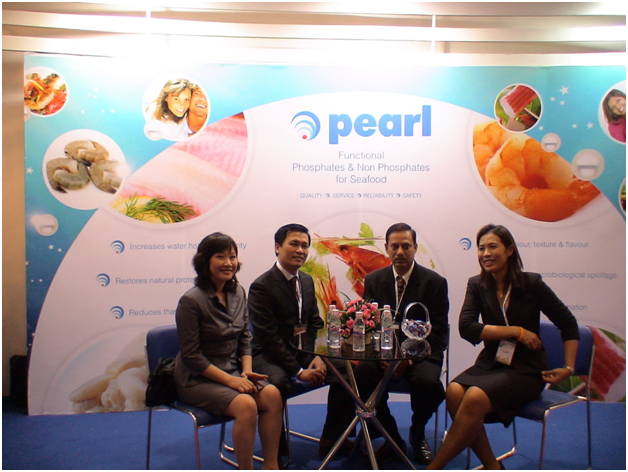By Collection
Children's preferences for sweeter, saltier tastes are linked
Scientists from the Monell Chemical Senses Center have found that children who most prefer high levels of sweet tastes also most prefer high levels of salt taste and that, in general, children prefer sweeter and saltier tastes than do adults. These preferences relate not only to food intake but also to measures of growth and can have important implications for efforts to change children’s diets.
“Our research shows that the liking of salty and sweet tastes reflects in part the biology of the child,” said study lead author Julie Mennella, Biopsychologist at Monell. Biology predisposes us to like and consume calorie-rich sweet foods and sodium-rich salty foods, and this is especially true for children. “Growing children’s heightened preferences for sweet and salty tastes make them more vulnerable to the modern diet, which differs from the diet of our past, when salt and sugars were once rare and expensive commodities.”
In the study, published online at PLOS ONE, Mennella and colleagues tested 108 children ages 5–10, and their mothers, for salt and sweet taste preferences. The same testing method was used for both children and their mothers, who tasted broth and crackers that varied in salt content, and sugar water and jellies that varied in sugar content. The method, developed by Mennella and her colleagues at Monell, scientifically determines taste preferences, even for very young children, by having them compare two different levels of a taste, pick their favorite, and then compare that favorite with another, over and again until the most favorite is identified.
The researchers also had mothers and children list foods and beverages they consumed in the past 24 hrs, from which daily sodium, calorie, and added sugar intakes were estimated. Subjects then gave a saliva sample, which was genotyped for a sweet receptor gene, and a urine sample to measure levels of Ntx, a marker for bone growth. Weight, height, and percent body fat were measured for all subjects.
Analyses of all these data showed that not only were sweet and salty preferences correlated in children, and higher overall than those in adults, but also children’s taste preferences related to measures of growth and development: children who were tall for their age preferred sweeter solutions, and children with higher amounts of body fat preferred saltier soups. There was also some indication that higher sweet liking related to spurts in bone growth, but that result needs confirmation in a larger group of children.
Sweet and salty preferences were correlated in adults as well. And in adults, but not in children, sweet receptor genotype was related to the most preferred level of sweetness. “There are inborn genetic differences that affect the liking for sweet by adults, but for children, other factors—perhaps the current state of growth—are stronger influences than genetics,” said collaborator Danielle Reed.
Both children and adults who preferred higher levels of salt in food also reported consuming more dietary salt in the past 24 hrs, but no such relationship was found between sweet preferences and sugar intake. This difference may reflect parents exerting greater control in their children’s diet for added sugar than for added salt. Or it could reflect increased use of non-nutritive sweeteners in foods geared for children—in other words, the sweetness of some foods doesn’t reflect their sugar content.
Omega-3 supplementation may improve children's sleep
A study published in the Journal of Sleep Research shows that supplementation of long-chain omega-3s, and DHA (docosahexaenoic acid) in particular, may be associated with seven fewer wake episodes and longer sleep duration in children. Additionally, higher blood levels of DHA may relate to better sleep among children based on parent-rated observations. The randomized, placebo-controlled clinical trial and the observational analysis were part of the independent study—DHA Oxford Learning and Behavior (DOLAB) study—initiated at the University of Oxford and funded by a grant from DSM Nutritional Products.
The DOLAB randomized, placebo-controlled clinical trial explored whether 16-week supplementation of 600 mg of DHA from algae per day verses corn/soybean oil placebo may improve sleep in a subset of children (n=362) ages 7–9 recruited from mainstream schools in Oxfordshire, United Kingdom, who were underperforming in reading. Additionally, the lead investigators assessed sleep patterns objectively in a random subgroup of 43 children by actigraphy (a non-invasive method of monitoring rest and activity cycles) and via sleep diaries completed by the children’s parents.
While the treatment trial did not show significant effects on sleep measures, as reported by the parent questionnaire (Child Sleep Habits Questionnaire—CSHQ), algal DHA supplementation did lead to an average of seven fewer wake episodes and 58 min of more sleep per night in the actigraphy subgroup of children.
The investigators also examined associations between blood fatty acid concentrations from fingerstick blood samples and subjective sleep using the CSHQ in a large epidemiological sample of children (n=395) participating in the DOLAB study. Parents and caregivers were asked to rate their child’s sleep habits over a typical week on 45 items using a three-point scale. Scores from the CSHQ questionnaire indicated 40% of the children had clinical-level sleep problems.
Higher levels of DHA in the blood were significantly associated with better sleep, including less bedtime resistance, parasomnia, and total sleep disturbance. Additionally, higher ratios of DHA and the long-chain omega-6 fatty acid ARA (arachidonic acid) were associated with less sleep disturbances.
Organic food may not lower overall cancer risk
A study published in the British Journal of Cancer shows that women who always or mostly eat organic foods are no less likely to develop cancer than women who eat a more conventional diet.
The researchers asked 623,080 women ages 50+, who were part of the Million Women Study, about whether they ate organic foods, and tracked the development of 16 of the most common types of cancer in a nine-year period following the survey. During this period, 53,769 women developed cancer.
The scientists’ analysis found no difference in overall cancer risk when comparing the 180,000 women who reported never eating organic food with around 45,000 women who reported usually or always eating organically grown food. When looking at the results for 16 individual types of cancer they found a small increase in risk for breast cancer but a reduction in the risk for non-Hodgkin lymphoma in women who mostly ate organic food, although these results could be partly due to chance and other factors.
“In this large study of middle-aged women in the U.K. we found no evidence that a woman’s overall cancer risk was decreased if she generally ate organic food. More research is needed to follow-up our findings of a possible reduction in risk for non-Hodgkin lymphoma,” said Professor Tim Key, a Cancer Research UK Epidemiologist based at the University of Oxford and one of the study authors.
Strawberries may help lower cholesterol
A study published in the Journal of Nutrition shows that consuming anthocyanin-rich foods such as strawberries may play an important role in lowering cholesterol and other risk factors for cardiovascular disease.
To evaluate the effects of strawberries on cardiovascular risk factors, researchers at Oklahoma State University conducted a 12-week study with a group of 60 overweight adults. Participants were randomly selected to consume a high (equivalent to 500 g fresh strawberries) or low (equivalent to 250 g fresh strawberries) daily dose of a beverage made with freeze-dried strawberries, or a control beverage.
The study revealed the high dose strawberry supplements were effective in significantly reducing total and LDL cholesterol levels. Additionally, both the low and high dose supplements were equally effective in decreasing lipid peroxidation compared with the control groups.
“With more than two-thirds of U.S. adults being overweight or obese, and having metabolic abnormalities associated with increased cardiovascular risk factors, we are pleased to see the positive effects that strawberries can have on lowering serum cholesterol,” said lead researcher ArpitaBasu, Associate Professor of Nutritional Sciences, College of Human Sciences at Oklahoma State University.
Diet beverages may aid in weight loss efforts
A study published in Obesity shows that drinking diet beverages may help people lose weight. The 12-week clinical study of 303 participants is the first prospective, randomized clinical trial to directly compare the effects of water and diet beverages on weight loss within a behavioral weight loss program.
Study participants were randomly assigned to one of two groups: those who were allowed to drink diet beverages, such as diet sodas, teas, and flavored waters, or those who were in a control group that drank water only. With the exception of beverage options, both groups followed an identical diet and exercise program for the duration of the study.
Conducted simultaneously by researchers at the University of Colorado Anschutz Health and Wellness Center and Temple University’s Center for Obesity Research and Education, the study shows subjects who consumed diet beverages lost an average of 13 lbs—44% more than the control group, which lost an average of 9 lbs. The participants in the diet beverage group also showed significantly greater improvements in serum levels of total cholesterol and low-density lipoprotein (LDL)—the so-called “bad” cholesterol and saw a significant reduction in serum triglycerides.
More than half (64%) of the participants in the diet beverage group lost at least 5% of their body weight, compared with only 43% of the control group. Losing just 5% of body weight has been shown to significantly improve health, including lowering the risk of heart disease, high blood pressure, and type 2 diabetes.
“There’s so much misinformation about diet beverages that isn’t based on studies designed to test cause and effect, especially on the Internet,” said John C. Peters, co-author of the study and the Chief Strategy Officer of the CU Anschutz Health and Wellness Center. “This research allows dieters to feel confident that low- and no-calorie sweetened beverages can play an important and helpful role as part of an effective and comprehensive weight loss strategy.”
Purdue researchers work to improve food waste in Africa
Purdue University researchers will lead a $5 million, five-year effort to help countries in sub-Saharan Africa reduce hunger and poverty fueled by food waste. By improving processing and marketing of key crops, those in developing countries can make better use of food that already is being produced but is simply lost through poor storage or processing technologies and management practices. The Feed the Future Innovation Lab for Food Processing and Post-Harvest Handling is funded by Feed the Future, the U.S. government’s Global Hunger and Food Security Initiative led by USAID.
“This award from Feed the Future will enable Purdue to help smallholder farmers make available not only more food in a region of the world where it is greatly needed but also more nutritious food,” said Purdue President Mitch Daniels.
Nine researchers from Purdue’s College of Agriculture and 11 from other universities in the United States and Africa will conduct research that will support and strengthen crops’ “value chain,” the process by which crops go from farm to market to fork.
Objectives of the research are to:
- Improve drying and storage of cereal grains (corn, rice, sorghum, and millet) and grain legumes (cowpea, soybean, and peanut) in the humid tropics of Africa, specifically Kenya and Senegal.
- Increase commercialization of crops and improve nutrition.
- Strengthen institutional and human capacities along the value chain, with emphasis on gender-sensitive approaches since most postharvest activities in sub-Saharan Africa are performed by women.
- Establish and strengthen public-private partnerships to promote and adopt innovations in technology to reduce postharvest food loss.
“It is essential to recognize that food security does not end at harvest, since a significant amount of the food produced in developing countries is lost due to poor postharvest handling techniques and limited market opportunities,” said Betty Bugusu, Project Director and Managing Director of the International Food Technology Center at Purdue.









